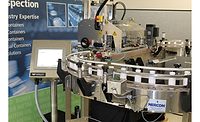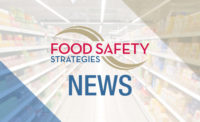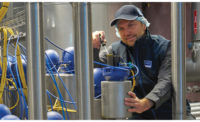Minimize risk, maximize quality with sound QC and QA practices
Under FSMA, dairies need to identify hazards that require a preventive control, including an analysis to verify the safety of ingredients.

How does the Food Safety Modernization Act (and specifically Preventive Controls for Human Food) affect your Hazard Analysis Critical Control Point (HACCP), food safety plans and your Quality Control Laboratory?
First, let’s review the terms Quality Control (QC) and Quality Assurance (QC). QA programs provide a process to ensure that the correct things are being done in a proactive manner and continually looking for ways to improve quality. QC programs should focus on doing things correctly and reacting to defects in products.
Preventive Controls are risk-based, reasonably appropriate practices and processes that a person knowledgeable about the safe manufacturing, processing, packing or holding of food would employ to significantly minimize or prevent the hazards identified under the hazard analysis that are consistent with the current scientific understanding of safe food manufacturing, processing, packaging or holding at the time of analysis. The curriculum reviews process, food allergen, sanitation, supply chain and recall program preventive controls.
Assessing the environment for potential pathogens (such as Listeria and Salmonella) has been and will continue to be a critical measurement to assess food safety within facilities that manufacture, process, package and/or hold food.
Food quality, while not part of the food safety regulation, will continue to be important as a measure to delight consumers who use your product. Testing of ingredients/raw materials was previously done sporadically to keep track of a challenging supplier, or a critical ingredient. Under FSMA, manufacturers/processors need to identify hazards that require a preventive control, including an analysis to verify the safety of ingredients.
Validation is the scientific and technical evidence that a method or control measure is effective; verification is an evaluation to determine whether or not the control measure is operating as intended. This is important to consider when developing and implementing a food safety plan. For the QC laboratory, that includes ensuring the methods in use have been validated and verified when used in the monitoring of preventive controls. Using the above examples, ensuring the validated methods are used for pathogen environmental monitoring and the testing of a high risk, critical ingredient is crucial. For example, labs should use FDA BAM Methods, Standard Methods for the Examination of Dairy Products. Or if using a commercial test kit, you must ensure it has been validated through AOAC or equivalent.
ISO-certified laboratories will guarantee the methods used have been validated. Speak with them regarding their verification process for your environmental, ingredient and finished product samples.
Facilities, organization & personnel
Ensure that personnel have the education or experience to be qualified to the sampling, analysis or calibration of equipment. Make sure they are trained on and authorized to run methods. Evaluate their proficiency on a regular, predetermined basis. Additionally, there needs to be appropriate staffing to accomplish those food safety responsibilities within the laboratory, and you need to have clear re-test guidelines. If the monitoring of preventive controls includes laboratory analysis, then it should be included in the implementation of that preventive control.
Consider the location of the laboratory and controlling access to prevent laboratory errors, cross-contamination and cross-contact. Examine who has access to the laboratory, how they use the space and how samples flow through the laboratory.
If monitoring activities occur in the laboratory, is the environment temperature and humidity controlled? Are critical instruments connected to a battery backup? Do you have a cleaning and sanitation program implemented? Does it use the same color-coding program as the manufacturing facility to prevent both cross-contamination and cross contact?
Test and control articles
For your food safety plan, record all relevant information on samples taken for monitoring and/or verification. This includes the date the sample is taken, amount/volume, who is authorized to collect the sample, and where it is to be taken and stored. Are there positive and/or negative controls that need to be run as part of the method? If so, what is the frequency and intent? Will they be made internally or purchased? For samples being sent to a partner laboratory, properly preparing, storing and shipping the samples maintains integrity.
Recordkeeping plays a critical role in preventive controls and GLPs (good laboratory practices). Data and records need to have appropriate dates, all documents should be reviewed by a qualified individual, the access and retrieval of data should be controlled, and all procedures for controlling the records should be clearly documented
This article was originally posted on www.dairyfoods.com.
Looking for a reprint of this article?
From high-res PDFs to custom plaques, order your copy today!





